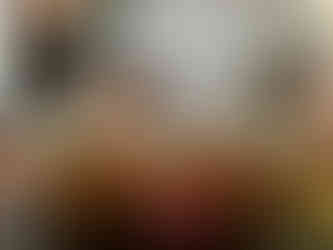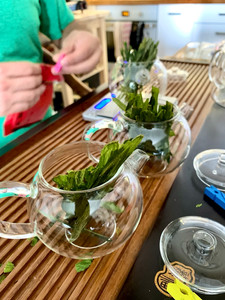From the day we chose to engage in Chinese tea professionally we have adapted an uncompromising procedure of sourcing our own tea by ourselves. China is an endless world of tea and the best way to get to original and most unique types of tea is by foot, in constant search of different types of tea, authentic growing areas and new suppliers to work with, without shortcuts. At the end of every such arduous journey, there was a reward waiting for us - tasting tea.
Tea tasting is a satisfying and instructive process that we repeat several times a year, but it can also be bothersome and discouraging. Every visit requires us to maintain great freshness and concentration, even after a 10-hour ride on a local bus - and I have yet to open up about the increased awakeness and sleepless nights as a result of drinking dozens of different types of tea on each day of sourcing trip.

Dark Wulong Tea Tasting, Wu Yi Mountains, Fujian Province, China 2018
Believe it or not, most of the tea we taste in China is not very successful. Very similar to wine, the yield isn't necessarily successful from season to season, which does not always align with our plans. There were times when we tasted over 100 different versions of the same type of tea until we found our tea, and there were times when we also did not find it eventually.
Our inability to visit China in the year of 2020, in the wake of the global corona crisis, has opened the door for us to a completely different experience of tasting and classifying tea - delivery of samples. Almost every month, our tea suppliers in China send us samples of fresh tea. While this is far from an ideal work procedure, we have been able to discover some significant advantages, the main one is 'neutrality'. The ability to drink tea for the first time in our tea room without distractions, with the tools we are familiar with and the ability to repeatedly drink and compare it to any tea in our collection. After all, it is obvious that in a festive hospitality experience at an altitude of 2,000 meters, tea literally tastes differently.
Blind tasting comparison of Green Tea, April 2020
How To Choose Tea
First you need to know that each tea product stands on its own. Any detail indicating the source of the tea, such as variety, growing area, harvest, year, etc; do not indicate the quality or value of the tea. Advanced descriptions such as the profile of the leaves, the tree and the environment in which the tea is grown, may help in classifying the authenticity and uniqueness of the tea, but they also cannot predict whether the tea will be tasty, high quality or highly valued.
You may climb a mountain to reach a remote farm and take beautiful footage. Eventually, you'll have to taste and be able to choose between a variety of teas of different profile, quality and price, all of which share the same story.
In order to understand how wide the range of Chinese tea qualities can be, one has to recognize the dimensions of China's domestic tea industry and the wide price range of raw material before it becomes product. At any given moment there can be hundreds to thousands of different tea products that came from the same area that season, carrying the same name, and yet have different character, quality, taste and price tag. Just like the merlot wines that came this year from the Golan Heights, which were grown, processed and aged differently in different wineries, will eventually be bottled into different series and brands, some will be sold in the supermarket for 10$, while others for hundreds of dollars per bottle. And if dimensions involved, then just for the sake of comparison, the area of Yunnan Province where Pu'er tea grows is 219 times larger than the area of the Golan Heights.
Raw Pu'er spring tea samples from Yunnan Province, June 2020
In the pictures above you can see tea samples we recently received from one of our suppliers in Yunnan during Covid. Each tea contains several portions for us to drink at different times and compare one to another if we wish. The first taste is always blind, so on one side the bags are cataloged in random letters or numbers. For a second taste, you can already turn the bag over and read basic info about the tea. Once a tea becomes a potential buy we will ask the supplier for deeper information and profile of it.
When tasting tea, few sips enough. Before we make we make decisions, we examine its effect on the body over time and its behavior from time to time, to the smallest details, such as how much it stimulates, its optimal preparation, ideal storage conditions, and so on. Lastly, we drink the tea objectively for a full session of 7 steeps, without distractions and comparison to other teas, just like you may drink it at home.
Lately on tea room, we started flirting with another added value of the revolutionary sample method, which is sharing with you guys the initial tasting experience of fresh tea that just came from China. This is a wonderful way that allows us to deepen our acquaintance with the local palate, and an educational way to get to know another step in the birth process of a high quality product. So remember, next time you are being hosted by us in tea room, ask for the latest samples!









Comments